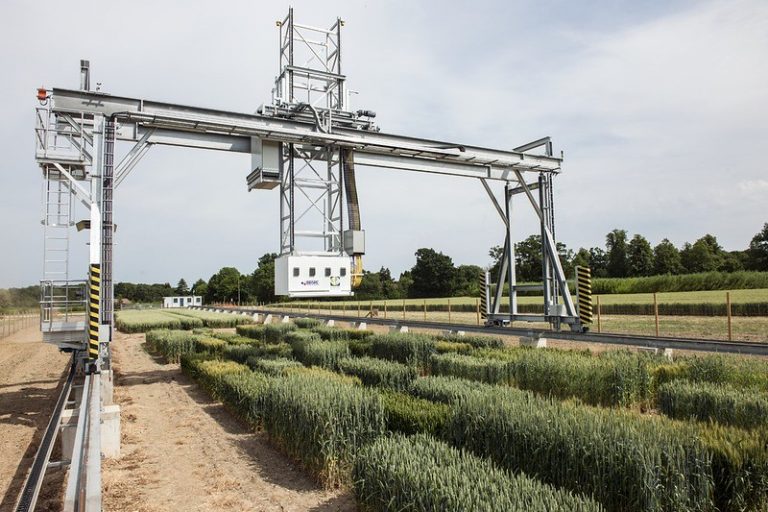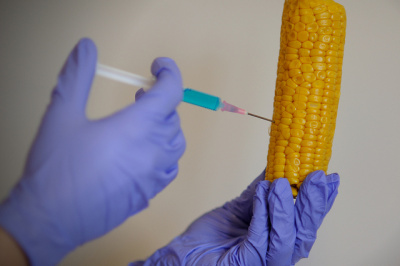Actualités
GMO: EFSA suggests to restrict the meaning of “transgenic”

On June 7, 2023, the European Commission might propose a modification of the regulatory framework for GMOs. Its goal is to have GMO obtained by “directed mutagenesis and cisgenesis” excluded from the requirements of labelling and risk assessment, which would concern only transgenic GMOs. But, according to the European experts, the very notion of “transgenic” could also be modified in order to further restrict the number of GMOs concerned by, among other things, this risk assessment and labelling.
At the end of 2022, the European Food Safety Authority (EFSA) published its opinion on the risk assessment of GMOs obtained by “directed mutagenesis and cisgenesis”. In conclusion, it proposed to make the risk assessment of GMOs an exception [1]. But this opinion also proposed, in a more subtle way, a major evolution in view of the regulatory discussions to come in 2023: to reduce what could tomorrow be defined as transgenic.
The existing legal framework is clear
Currently, GMOs are clearly defined by the European legislation. Directive 2001/18 states that a GMO is “an organism, with the exception of human beings, in which the genetic material has been altered in a way that does not occur naturally by mating and/or natural recombination”. Thus, any organism which genome has been modified by the insertion /deletion of one or more genetic sequences or by mutations induced in a way that does not occur naturally (by using cells, for example) is a GMO subject to the requirements of the law [2]. In 2018, the Court of Justice of the European Union (CJEU) reminded the European Commission of these rules established by the European legislation. In France, the Conseil d’Etat then issued the same reminder to the government in February 2020, specifying that these rules apply to GMOs derived from directed mutagenesis and random mutagenesis techniques implemented on cultures of plant isolated cells.
While the Commission has always chosen to argue that GMOs obtained through techniques of mutagenesis, without defining this term, should not be subject to the requirements of the legislation, the CJEU’s decision was a setback for it. In 2021, following this judicial setback, the European Commission announced its intention to propose a modification of the European regulation to exempt GMOs obtained by directed mutagenesis or cisgenesis from the requirements of the law [3]. This proposal might arrive on the table of negociation on June 7, 2023.
Towards changing the definition of “transgenic”?
But make no mistake about it. This initiative of the European Commission will be an opportunity for the latter to further restrict the number of GMOs that would continue to be subject to the current legislation. A strategy that could notably be based on the use of vague terms or definitions. For example, in 2021, it deliberately used vague language when referring to a new regulatory framework on GMOs obtained by directed mutagenesis. The expression “directed mutagenesis” is however sufficiently imprecise to potentially refer to all mutagenesis techniques, including those that do not have a history of safe use or that require intermediate steps with transgenesis.
An assumption confirmed by the opinion issued at the end of 2022 by the EFSA. For the latter, any organism genetically modified to obtain mutations, regardless of the mutagenesis technique used, should not be subject to risk assessment (except in very specific cases) [4].
The same opinion of the European experts addresses the issue of GMOs with a genetic sequence inserted in a non-natural way in their genome. This is where a major turning point is suggested, by proposing to distinguish between these GMOs according to the origin of the introduced genetic sequence. Currently, we speak of transgenesis (in common words, the inserted sequence comes from a different species) and cisgenesis (in common words, the inserted sequence comes from the same species). Although these two terms are not formally defined by any European or national legislation, they nevertheless correspond to the first two examples given by European legislation of techniques giving rise to regulated GMOs, namely:
- “1) recombinant nucleic acid techniques involving the formation of new combinations of genetic material by the insertion of nucleic acid molecules produced by whatever means outside an organism, into any virus, bacterial plasmid or other vector system and their incorporation into a host organism in which they do not naturally occur but in which they are capable of continued propagation;
- 2) techniques involving the direct introduction into an organism of heritable material prepared outside the organism” [5].
These two definitions do not explicitly mention the terms transgenesis and cisgenesis, but they unambiguously cover these two techniques. Cisgenesis is only a particular form of transgenesis which consists in introducing into a plant a nucleic acid molecule coming from the same species, which can thus theoretically be inserted naturally or by longer crossing techniques. In case it might be considered as excluded from the first example given, which on the other hand applies without doubt to the other forms of transgenesis, it does definitely fit into the second.
The opinion of EFSA, however, does not take this into account. This organization proposes a definition of transgenesis and cisgenesis. By means of a diagram and a lexicon, the European experts define the term transgenesis in a much more reduced way. A transgene would be a genetic sequence transferred between two plants for which no “advanced technique” allows them to be crossed. A cisgene would be a genetic sequence coming not from the same species but, to use an expression that is beginning to emerge in the debate, from the breeder’s genomic pool. According to European experts, a breeder’s genomic pool is composed of three groups. In the first group are plants that cross freely. The second group includes plants that are difficult to cross with those of the first group, crosses that can sometimes produce fertile hybrids. Finally, the third group concerns plants that cross with those of group 1 only with the help of advanced techniques such as embryo rescue, polyploid induction, bridge crossing using intermediate plants. For those who are unaware of this, EFSA points out that the genomic pool of breeders grows from year to year. Defined in this way, the number of GMOs qualified as transgenic and which would remain subject to the current risk assessment and labelling requirements would be reduced. And the number of GMOs labelled as cisgenic that the Commission wants to exempt from risk assessment and labelling would increase.
The forthcoming proposal, at the beginning of June 2023, for a new legislative framework for GMOs obtained by directed mutagenesis or cisgenesis will, of course, be the subject of much attention. Among these, the first will concern the vocabulary used and the definition given to the terms “directed mutagenesis” and “cisgenesis”. If the Commission follows the opinion of European experts, it will go further than it has claimed since 2021 by proposing an approach that will empty the category of transgenic GMOs year after year.
[1] , « Pour l’AESA, l’analyse des risques liés aux OGM doit devenir l’exception », Inf’OGM, 27 December 2022.
[2] With the exception of three methods = in vitro fertilisation, natural processes such as: conjugation / transduction / transformation, and polyploidy induction.
[3] ,
, « Objectif 2030 : déréglementer la plupart des OGM en Europe ? », Inf’OGM, 16 August 2022.
[4] , « Pour l’AESA, l’analyse des risques liés aux OGM doit devenir l’exception », Inf’OGM, 27 December 2022.
[5] Directive 2001/18, Annexe IA, Part 1.











